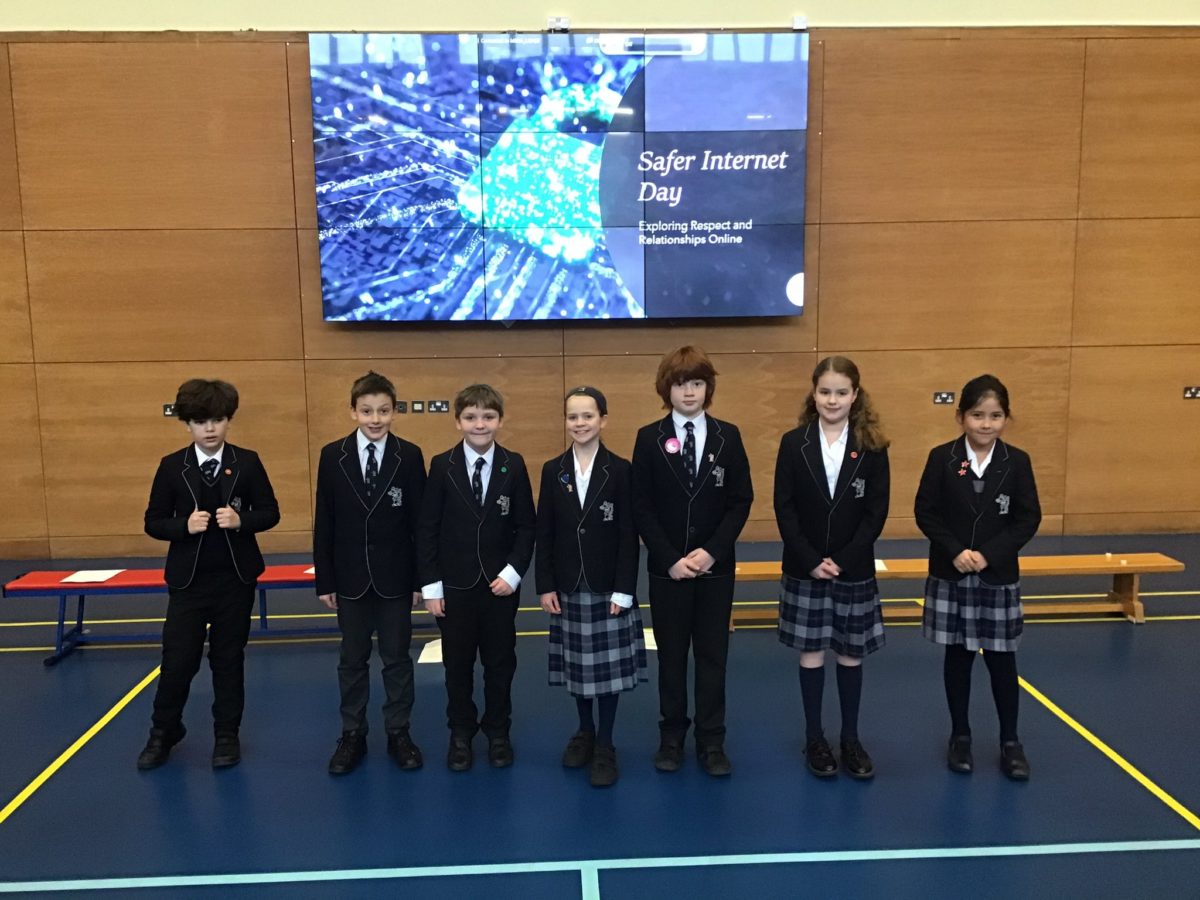Our pupils know that they should always ‘speak out, stay safe’ and this week that message has been strengthened further through lessons, assemblies and more relating to Safer Internet Day. Safer Internet Day was officially on Tuesday, but there have been a wide range of activities happening this week that have further strengthened these messages and rules.
We started the week with Ms Crump’s assembly, where we shared ideas about how we can have fun online. There are lots of ways that we can stay safe online too and we learned that there would be lots of opportunities to explore this further during the week.
Mr Harper introduced internet safety stories in Tuesday’s Infant assembly and heard about Digiduck who shared his password with friends. We all know that it’s really important to keep our passwords safe to keep our information safe. Thursday’s Key Stage 2 assembly was led by the team of Digital Leaders from Years 4, 5 and 6. They had created a series of online safety scenarios that they shared with Years 3 to 6 and they made us all think hard about what we might do in the various situations. The quiz that they had prepared for us was great fun and we learned lots too. Digital Ambassadors from Oundle School also visited Year 6 to talk to them about their digital footprint and the how they should consider this when making decisions about their activity online. It was very thought-provoking and made us all think a little bit harder about our actions online.
In every Computing lesson or lesson where they are accessing devices, children are reminded about key rules that they can follow to keep themselves safe online. This week our lessons were focussed on internet safety. In Reception, we talked about how we stay safe when crossing the road and what we do if we are feeling worried. We decided that it is the same when we are on devices and that if something appears on the screen that we are not expecting or if something seems strange, we should speak to a trusted grown-up. Children in Years 1 and 2 identified personal information and sorted it into information that should be kept private and information that could be shared. Years 3 and 4 thought about what they would do if someone that they did not know tried to chat with them online. They then designed a character who would pop up and help people to remember how to stay safe online. Children in Years 5 and 6 were asked to channel their inner gamer and make recommendations to their classmates about their favourite online or digital games. They made posters, stating why they are fun to play and what features make them safe to play.
Whether you are online, in person, at home or out and about during the half term break, remember to ‘speak out, stay safe!’





